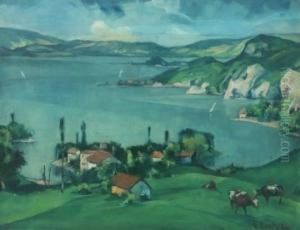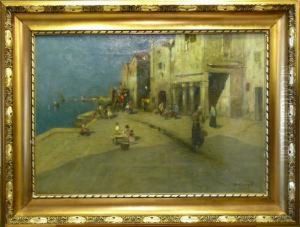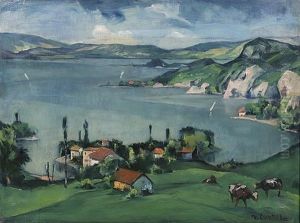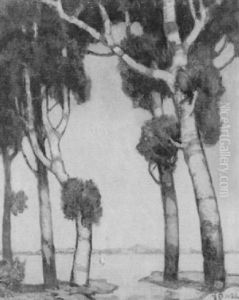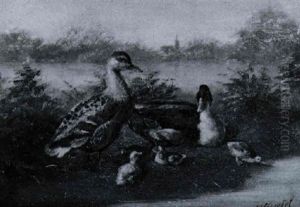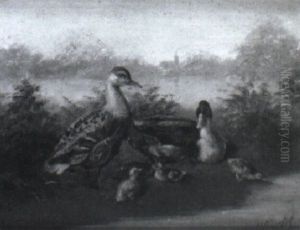Wilhelm Oertel Paintings
Wilhelm Oertel, born in 1821, was a German artist known for his landscape paintings and his work during the 19th century. Oertel's contributions to art are situated within the Romantic period, which emphasized emotion, individualism, and a deep appreciation for the awe-inspiring power of nature.
Oertel's life and career spanned a period of significant change in Europe, marked by industrialization, political upheaval, and cultural shifts. His works often reflected a fascination with the natural world, a hallmark of Romanticism, where artists sought to capture the sublime beauty and power of the environment. While his landscapes were rooted in the observation of real places, they also conveyed a sense of the dramatic and the emotional, characteristics that defined Romantic art.
During his lifetime, Oertel witnessed the revolutions of 1848, which swept across Europe and influenced many artists of his time. The political and social turmoil of the period may have had an impact on his artistic vision, as it did with many of his contemporaries. Oertel's landscapes can be understood as a form of escape or a quest for a more harmonious relationship between humanity and the natural world, a theme that resonated deeply during times of unrest.
Wilhelm Oertel passed away in 1906, having contributed to the rich tapestry of Romantic landscape painting. His work remains a testament to the era's search for beauty, emotion, and connection with nature. While Oertel may not be as widely known as some of his contemporaries, his paintings still offer a window into the soul of the 19th-century Romantic movement and its enduring legacy in the history of art.
